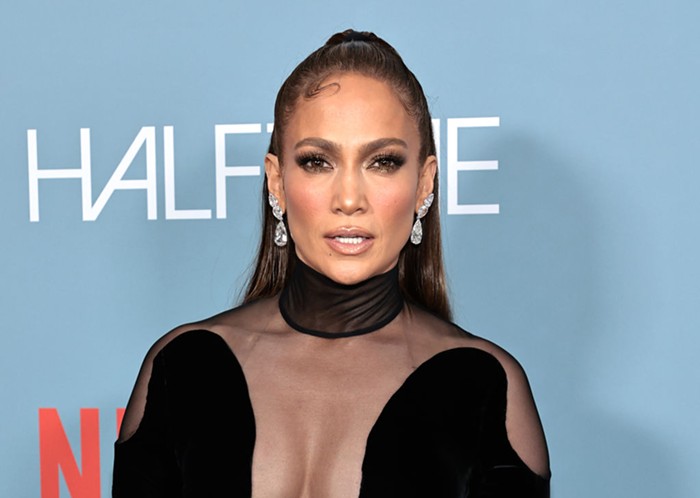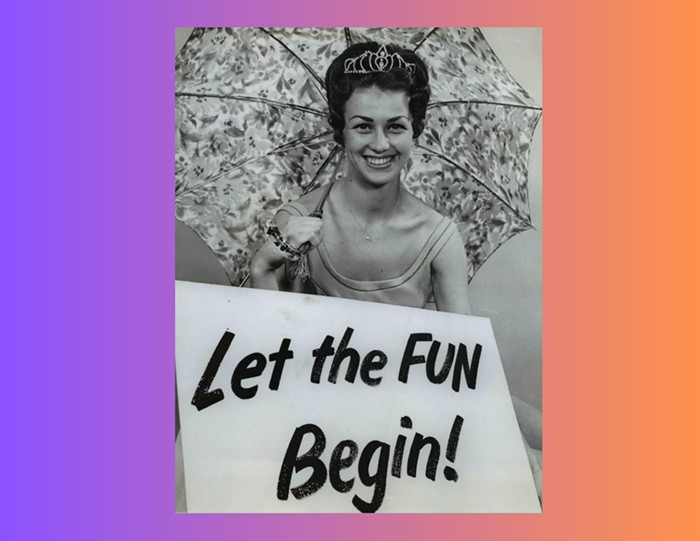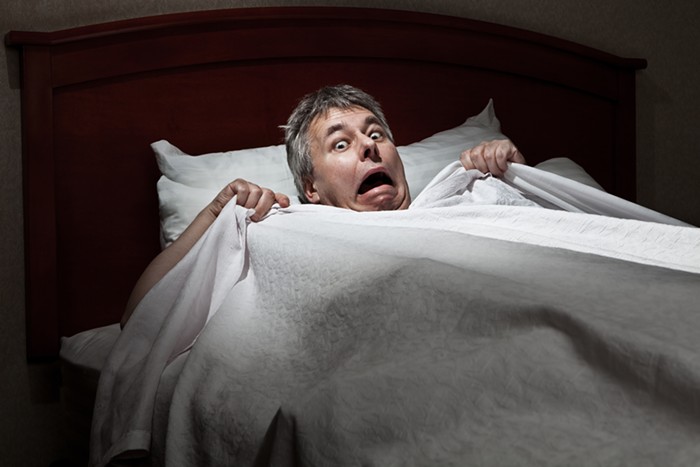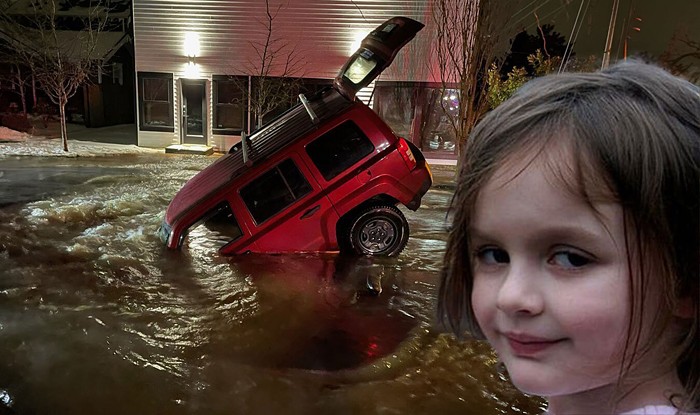WHEN YOU thumb up a color-saturating Instagram filter for your shot of Mt. Hood over an airplane wing or your pastel-hued brunch cocktail, you have William Eggleston to thank. Those Instagram filters—to say nothing of the art world at large—might look a lot less colorful had he not experimented with color photography, an unpopular approach in a 1960s art world that still preferred tasteful black-and-white.
Eggleston's work is the opposite: His saturated dye-transfer prints lend a sense of hyperrealism to everyday subjects like gas stations, neon signage, the teal and salmon interiors of diners—even something as seemingly un-evocative as a bare bulb anchoring a ceiling (it's blood red, so pretty evocative as ceilings go).
This Saturday, March 26, 65 of Eggleston's photographs will be on view at the Portland Art Museum, but in keeping with his experimentation, 23 of them are black-and-white images reprinted from his early archives. Ahead of PAM's show, here's what the museum's curator of photography, Julia Dolan, told me about Eggleston's influence on later artists like Cindy Sherman, the art world's problem with color photography, and the distorting lens of our nostalgia for the '50s and '60s.
On Eggleston's early subject matter: "Like many good photographers, he photographs what he knows, and that's often his life in and around Tennessee and Mississippi, and other areas of the American South.... I think what's so wonderful is to see this beginning, this budding, of looking out onto the world at subjects that fine-art photographers at that time would [consider] banal, completely boring, not subject matter at all: empty tables at a café, people walking down the street, automobiles, detritus on the side of a street—these are all things that were not the subjects of fine-art photography for the most part at the time. And I think now for us looking back on it, it's almost a little bit difficult to get a pure idea of it because we have a strong sense of nostalgia for this time period—for the '50s, '60s, even the '70s—and so we see things that feel very Mad Men or of a different time in the United States that we are attracted to."
On Eggleston's black-and-white photography: "If we know about William Eggleston's work, we know about that saturated red ceiling... we're so used to these colors and this vibrancy. To then be able to juxtapose the black-and-white work—which in some ways makes us think a little bit more about composition because that layer of color has been removed—we start to see these patterns of composition in his work, and the way that he evolved before hitting the scene and punching us in the face with these dye-transfer prints that he has manipulated so that certain colors are richer than others. It's a really wonderful experience to see both at the same time."
On Eggleston's pioneering of color photography: "At the time that Eggleston switched to color and started experimenting with it, which was the early 1960s, very few other arts-oriented photographers were... One of the reasons for that was that [fine-art photography] almost always had to be black-and-white, because color photography was linked to advertising and it was considered less artistic, it was considered garish or very base, and for many people who held authority in terms of photography, it was not art."
On the reception of Eggleston's first MoMA show: "Critics went crazy. Critics in the New York Times and other places said the work was boring, the colors were garish, and they couldn't believe it. Some people said it was the worst show of the year."
On Eggleston's impact on younger artists: "[Eggleston's color photography] really encourages people like Nan Goldin, Laurie Simmons, Cindy Sherman even, because Cindy's in school and making black-and-white photographs in the 1970s, and by the early 1980s she's pushing into color... He opens up this world for them in a really magnificent way, and little by little, people start to accept color photography as artistic and worth being seen in galleries and museums."
William Eggleston: Selections from the Wilson Centre for Photography
Portland Art Museum, 1219 SW Park, opens Sat March 26, through Aug 21, $19.99, portlandartmuseum.org












